 | |||||||||
| Home | A Brief History |
Amusement Park |
Bars & Dance Halls |
Photo Gallery |
Historical Events |
BLYC | Local Restaurant Guide |
Store | Contact Us |
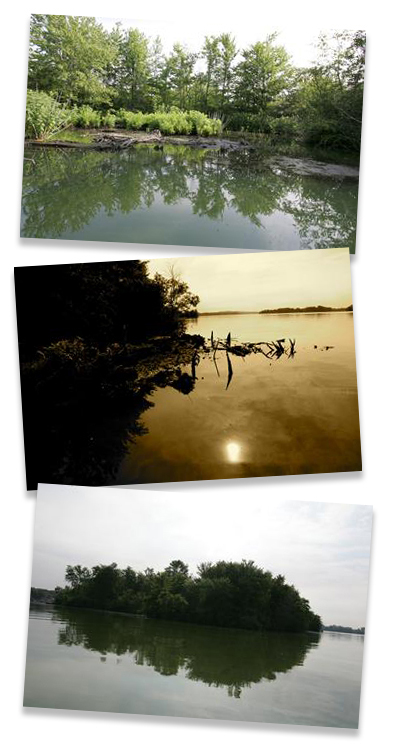
Cranberry Marsh
“Our story begins with the Glacial Period. It is generally accepted as a fact that at one time a great field of ice came down from the north covering much of North America as well as Northern Europe”…”And while coursing down, the ice at places, pushed and plowed out great holes in the earth, some of which now form the beds of our great lakes besides many smaller ones, including our own little Buckeye Lake or pond, as indicated in Schofield’s Map of Survey.”
Joseph Simpson,The Story of Buckeye Lake
Cranberry Marsh is a floating island of sphagnum moss, home to countless rare species of plants and copious cranberry plants. The bog is a relic of the Ice Age.
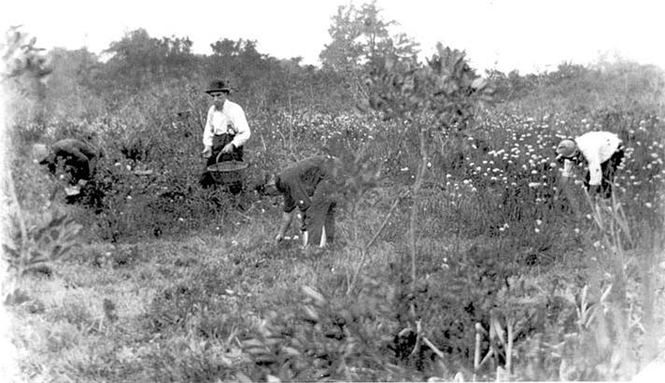
Formation of Cranberry Marsh
As the Wisconsian glacier, the last in a series of major continental glaciers to cross Ohio, slowly lumbered south out of eastern Canada, northern plants as well as animals were forced southward. The glacier moved so slowly that a wide belt of Canadian forest was able to move along well in advance of the ice. By the time this massive ice sheet caught up to, pushed over and buried the mature seed-producing plants, their offspring farther south of the glacier were already producing seedlings on their own. Thus, the boreal forest was able to remain a step ahead of the glacier. For thousands of years during the Ice Age, these Canadian plants, including a host of bog plants, occupied a place in the Ohio landscape.
As climates warmed and the last of the glaciers began to retreat northward, natural lakes known as kettles were formed; Buckeye Lake is an example of a kettle lake.
Occasionally the flow of the glacier stopped and stagnating ice would break and become buried in the glacial till. As the ice melted, the till material collapsed into the hole forming funnel shaped hollows, 20 feet or more deep. Like all lakes and ponds many of these kettles became filled with sediment and peat, becoming swampy depressions.”
Plants
The Canadian forest, dominated by spruce and fir, was displaced by more southern forests that had previously occupied the site. Yet at the same time this was happening, the Canadian plants were able to colonize the newly exposed wet glacial soils, which emerged from beneath the receding wall of ice, as well as around the lakes, ponds and marshes left in the glacier’s wake. By the time the first settlers reached Ohio, most of the Canadian vegetation had long since vanished from America. The countless shallow bog depressions had filled to such an extent that they were totally recolonized by marsh plants and swamp forests more typical of local latitudes. In a few isolated sites however, special environmental conditions have allowed individual species, and in the case of bogs, entire plant communities to linger. Cranberry Marsh, at Buckeye Lake is one such site in Ohio. Today, more than 11,000 years after the final retreat of the Wisconsinan glacier, this bog community of highly diverse Canadian plants still remains as a living tribute to the Ice Age. Only in the deepest of lakes, such as that in the Buckeye Lake basin, had this natural filling process been retarded enough to enable the Canadian bog mat community to survive. Even at that, the mat could have been overtaken by marsh vegetation had it not been for the very harsh environment of the bog, an environment inhospitable to most marsh plants. The key to this condition is simple, as it grows, sphagnum releases acid into the water, a byproduct of its growth process. The exceptionally large quantity of sphagnum, upon which the entire bog community is based, releases a staggering quantity of acid. Consequently, this environment becomes too acidic for the survival of most plants, other than those that have adapted to the bog community. Sphagnum moss also has an unusual cell structure, enabling it to hold many times its own weight in water. On hot summer days, it acts like a giant sponge, evaporating large quantities of water, which cools the surface of the bog while at the same time maintaining a high humidity, a condition absolutely critical for the survival of many bog species. This thick, spongy covering of sphagnum moss also acts like a huge blanket of insulation, keeping root level temperatures well below air temperatures. This dramatically reduces the length of the growing season and seed germination in the bog, as compared to surrounding envirnoments.
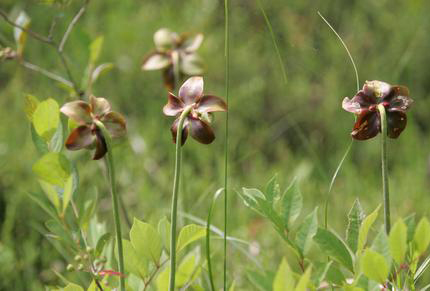
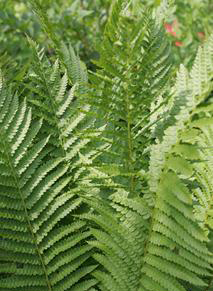
With the advent of the Ohio and Erie Canal, the Big Swamp was an excellent Site for the construction of a larger reservoir to furnish the water needed to lift canal passenger boats and barges over the divide between the Licking and Scioto river basins. An earthen dike 4 miles long was constructed around the west end of the swamp, the dike was completed and the reservoir was filled in 1830. Thus, the Licking-Summit Reservoir (which eventually would become Buckeye Lake) was born and the Big Swamp was no more. Oddly, it was the impoundment of the Big Swamp in 1830 which made Cranberry Bog so unique. As the waters backed up behind the dike, all of the swamp was inundated and destroyed, except for the very youngest, and therefore more buoyant, segment of the bog mat. Instead of disappearing beneath the waters, as did most of the adjacent swamp forest, a 50-acre upper segment of the bog mat along the north shore stretched and expanded like a giant water-logged sponge and rose 6 feet with the new water level. No longer did the floating bog mat surround the glacial lake, as is typically the case with such bogs. Now the lake surrounded the bog mat,
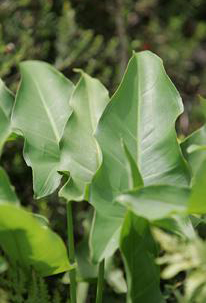
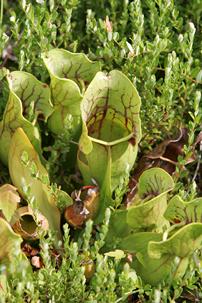
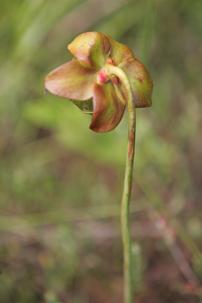
The most startling change has been the deteriorization of the island itself. The force of man, not nature, created the island. Now the forces of man and nature are combining to slowly destroy it. This little island is at the mercy of severe wake and ice action coming off a very large, shallow and highly used lake. Another significant factor is that while the highly acidic stagnant waters of bog lakes typically help perpetuate the sphagnum mat, the well-oxygenated, slightly alkaline waters of Buckeye Lake allow and accelerate the natural decomposition of the mat. The waters of the man-made Buckeye Lake enable trees and marsh vegetation to invade the edges of the island where bog acid has been sufficiently diluted and oxygen is readily available. Although this dense ring of trees and shrubs has somewhat stabilized the margins of the island, it has also shaded out adjacent bog plants. Besides shading the bog vegetation, occasionally when trees are blown over, large clumps of peat clinging to the trees’ shallow root system are torn away from the island and lost. In recent years, two fairly large chunks have simply torn off and floated away. This will most likely continue as the island continues to feel the impact of natural wave action and the wakes of passing boats. Unfortunately, there is no practical way to stop the deterioration without changing the character of the bog environment. Just how much time the island has before it disappears is unknown. When the island first surfaced, it was about 50 acres in size. By 1910, only 45 acres remained. By 1955, the island had deteriorated to 23 acres. In 1963, the island had lost more ground and was less than 20 acres. More than 40 years later, the island has dwindled to less than 11 acres. Cranberry Bog State Nature Preserve remains today as one of the most unique and fascinating natural areas in the nation. In all probability, Cranberry Island will continue to shrink, possibly disappearing altogether.